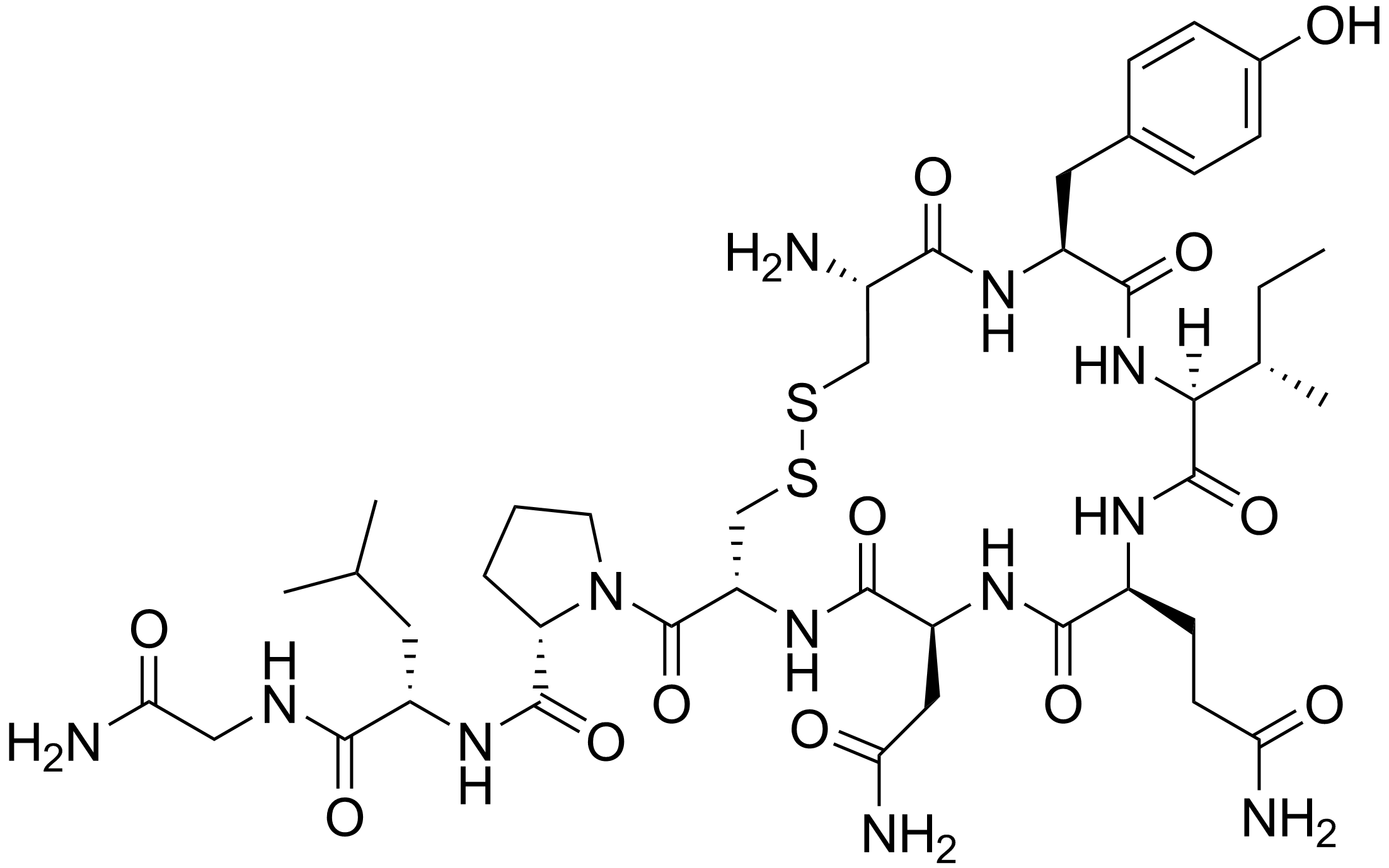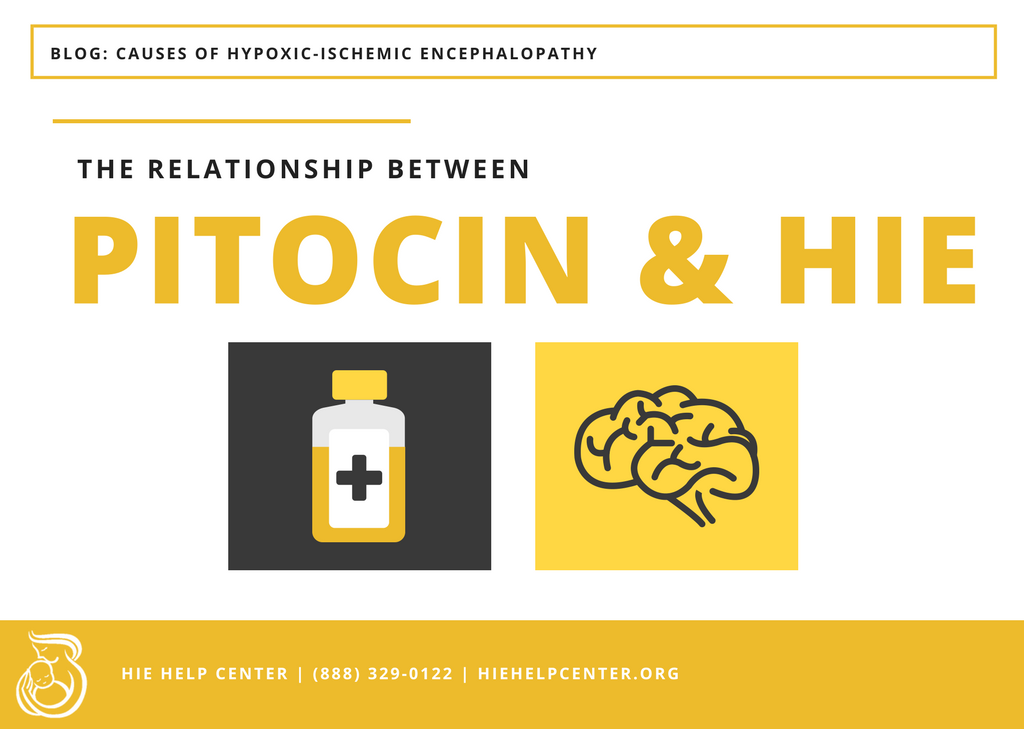The drug Pitocin is a synthetic form of the hormone oxytocin, which (among other important roles) helps to trigger the onset of labor. Pitocin can be administered intravenously to induce labor or enhance contraction activity. It is sometimes also used to control maternal bleeding after childbirth (1). While Pitocin can have notable benefits, its use in labor also carries serious risks to both the mother and baby. Here, we will focus on complications of Pitocin usage that can cause a baby to develop hypoxic-ischemic encephalopathy/HIE (brain damage caused by insufficient oxygen and blood flow around the time of birth, sometimes leading to disabilities such as cerebral palsy).

Uterine tachysystole and HIE
In a healthy labor, it is normal for uteroplacental blood flow to be reduced during contractions. However, Pitocin use can cause tachysystole of the uterus. Exact definitions vary, but tachysystole, also known as “uterine hyperstimulation,” generally refers to contractions that are abnormally long, too frequent, too strong, or with insufficient rest in between contractions. Tachysystole can limit the flow of oxygen through the uterus, placenta, and umbilical cord, resulting in fetal oxygen deprivation and possible HIE.
If a patient’s uterus becomes hyperstimulated with too many contractions and not enough rest, obstetricians and nurses should immediately reduce or stop Pitocin administration, even if the fetal heart rate is still normal (2). If there are signs of fetal distress, such as an abnormally slow or fast heart rate, this is usually an indication that the baby is not tolerating labor and may not be getting enough oxygen. Medical intervention are immediately necessary. Generally, this takes the form of nurses giving the laboring mom fluids, oxygen and changing position. If this doesn’t help, an emergency C-section is likely needed.
Uterine rupture and HIE
A known complication of Pitocin use and tachysystole is uterine rupture. Although the risk of uterine rupture is relatively low overall, it is associated with the use of labor-enhancing drugs like Pitocin. Physicians and nurses should be especially cautious when it comes to using Pitocin in women who are having a vaginal birth after cesarean (VBAC) because they have a higher risk of uterine rupture (2).
There are two main ways that uterine rupture can harm an infant (3, 4):
- Uterine rupture can cause the placenta to become partially or completely detached from the uterus (placental abruption). This can lead to dangerous maternal hemorrhaging and deprive the infant of oxygen.
- The baby is no longer confined to the uterus and begins moving up out of the uterus into the abdomen. This is sometimes referred to as “fetal extrusion,” and is likely to cause oxygen deprivation and HIE.
Both uterine rupture and placental abruption can cut off the fetus’s oxygen supply, and, like other complications from tachysystole, may lead to hypoxic-ischemic encephalopathy (HIE) and severe brain damage.
In one study published in the Journal of Perinatal Medicine, the incidence of HIE following uterine rupture was 33% (5).
Appropriate vs. Inappropriate Pitocin use
There are situations in which induction with Pitocin is an appropriate course of action (mainly, if the risks of continuing with the pregnancy outweigh the risks of artificial induction). However, due to the potential of Pitocin to cause HIE and other serious conditions, it should only be used for medically-necessary inductions. It should also generally be avoided in the following circumstances:
- The mother has a “classical” C-section scar or another type of scar that increases the risk of uterine rupture
- The mother has a history of uterine rupture
- The pregnancy is complicated by one of the following:
- Active genital herpes
- Placenta previa
- Vasa previa
- A prolapsed umbilical cord or an umbilical cord presentation that has not resolved with time
- Transverse fetal lie
- Invasive cervical cancer
- Category II or III fetal heart rate tracing (2). Oxytocin should also be reduced/discontinued in the event of a category II heart tracing (6).
Finally, it should be avoided if there are any reasons why a vaginal birth is unsafe.
Doctors administering intravenous Pitocin should be aware of its risks, and extremely vigilant for signs of fetal distress during delivery. They should also be prepared for the possibility of an emergency C-section if tachysytole occurs and puts the mother and/or baby in jeopardy.
If doctors recommend Pitocin administration when there are contraindications, or fail to respond promptly and appropriately when complications arise, this may constitute medical malpractice.
About the HIE Help Center and ABC Law Centers
The HIE Help Center is run by ABC Law Centers, a medical malpractice firm exclusively handling cases involving HIE and other birth injuries. Our lawyers have over 100 years of combined experience with this type of law, and have been advocating for children with HIE and related disabilities since the firm’s inception in 1997.
We are passionate about helping families obtain the compensation necessary to cover their extensive medical bills, loss of wages (if one or both parents have to miss work in order to care for their child), assistive technology, and other necessities.
If you suspect your child’s HIE may have been caused by medical negligence, contact us today to learn more about pursuing a case. We provide free legal consultations, during which we will inform you of your legal options and answer any questions you have. Moreover, you would pay nothing throughout the entire legal process unless we obtain a favorable settlement.
You are also welcome to reach out to us with inquiries that are not related to malpractice. We cannot provide individualized medical advice, but we’re happy to track down informational resources for you.
The information presented above is intended only to be a general educational resource. It is not intended to be (and should not be interpreted as) medical advice. If you have questions about Pitocin, please consult with a medical professional.
Sources
- Oxytocin Injection: MedlinePlus Drug Information. (n.d.). Retrieved November 18, 2024, from https://medlineplus.gov/druginfo/meds/a682685.html#side-effects
- (n.d.). Retrieved June 10, 2019, from https://www.uptodate.com/contents/induction-of-labor-with-oxytocin
- (n.d.). Retrieved November 18, 2024, from https://www.uptodate.com/contents/uterine-rupture-after-previous-cesarean-birth
- Uterine Rupture: Causes, Symptoms, and Treatment. (2017, October 30). Retrieved June 10, 2019, from https://www.healthline.com/health/pregnancy/complications-uterine-rupture
- Martínez-Biarge, M., García-Alix, A., Garcia-Benasach, F., Gayá, F., Alarcón, A., González, A., & Quero, J. (2008). Neonatal neurological morbidity associated with uterine rupture. Journal of perinatal medicine, 36(6), 536-542.
- Barbieri, R. L. (2018, August 28). Stop staring at that Category-II fetal heart-rate tracing… Retrieved June 12, 2019, from https://www.mdedge.com/obgyn/article/65272/obstetrics/stop-staring-category-ii-fetal-heart-rate-tracing#bib2



Leave a Reply
You must be logged in to post a comment.